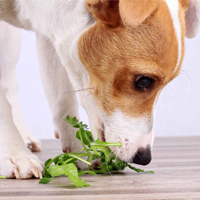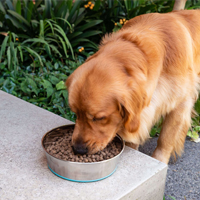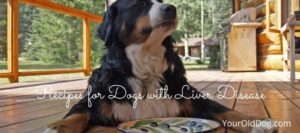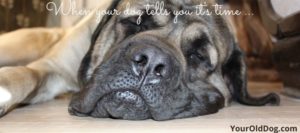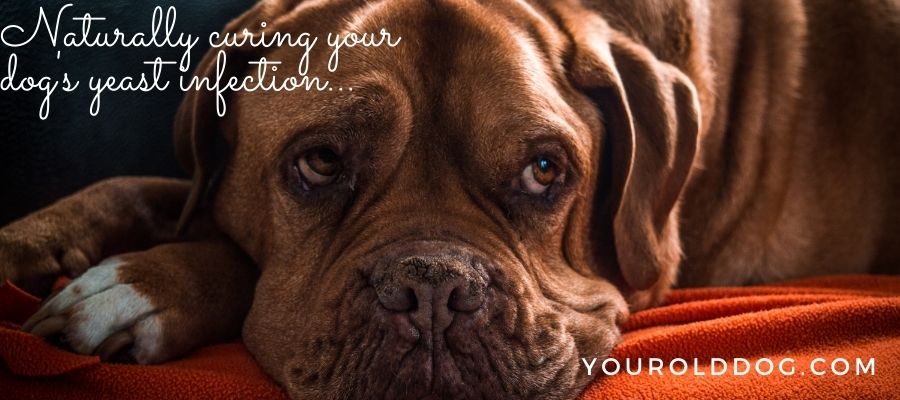
4 Steps to Eliminating Your Dog’s Yeast Infection Permanently
This article will walk you through the process of using natural remedies to treat and eliminate a dog yeast infection permanently without ever having to use synthetic drugs. Developing yeast and fungal skin infections in a number of dogs are staggering today.
Dogs suffering from excessive yeast, are suffering through a lot of discomforts. It’s important to know exactly how this condition developed in order to get started on a natural treatment path. While this article details some of the best options, understanding the basics of a yeast infection can go a long way. For starters, a yeast infection is essentially an overabundance of fungus on and inside the dog’s body.
This leads to a breakdown in skin defenses, which in turn leads to the infection. Get natural remedies for Dog Fungal Skin Infection, Yeast Infection Rash On Dog’s Belly, Bumps On Dog’s Skin
Candida, yeast, and fungi all live on a dog’s body in general harmony. But, when these elements get out of control; trouble begins. Underlying difficulties, like allergies or hormone disorders, may also lead to a build-up of yeast because the normal balance of your dog’s skin chemistry has been upset.
Removing Excessive Yeast
1. Internal Supplements for Treating Dog Yeast Infection
Coconut Oil:
Coconut oil should be fed routinely and dogs love the taste. Regardless of whether or not your dog has a bacterial problem, feeding coconut oil has tremendous benefits to the skin. It can also help with loose hair and shedding problems. Your dog will love this mixed in with his or her food.
The high amounts of lauric acid in the oil are what make it a super supplement for fighting bacteria such as yeast and other fungus. It’s also a must for a dog yeast infection or for dogs with any type of allergies, digestive and heart problems, and any auto-immune issues.
Coconut oil dosage for dogs (work up to the maximum amount): 1 level tsp per 10 lbs of body weight or if you have a large dog, use roughly 1 level tablespoon for every 30 pounds daily.
Specific Products that Can Help:
Daily Multi Includes prebiotics, probiotics, digestive enzymes so you don’t have to add individually. It also includes glandular to support every gland in your dog’s body. However, for specific conditions, we recommend adding additional glandular separately as mentioned further down the page. You can learn more at this link: Daily Multi Complete for Dogs
CandElim and Optimal C are elixirs that can be purchased individually or as a kit. Together they can be extremely helpful for restoring your dog’s body from candida overgrowth by shutting down specific proteins in the body and stimulate the dog’s body to produce additional vitamin C through the use of L-gulonolactone oxidase production. You can learn more here: CandElim and Optimal C
Sulfur: In the form of homeopathy can help tremendously with the itch from skin eruptions, rashes, redness, etc. Again, we’re talking sulfur in the form of homeopathy. Sometimes spelled sulfur. This is not the same as sulfa which can cause allergic reactions. This is a mineral found in every cell of your dog’s body and helps to keep the skin healthy. Sulfur is helpful for scratching and chewing and healing skin sores. Simply toss the pellets on top of your pet’s food.
We recommend using Sulphur 200C (aka Sulphur 200ck) for dogs with yeast and chronic bad skin. It can help with rashes, eczema, skin eruptions, acne and pimples, and dry rough skin. The dosage is for dogs of all sizes and weights. Remember this is homeopathy and dosage does NOT go by weight.
DOSAGE SKIN: 3 pellets three times daily with less frequency as you see improvement. Once your dog really improves, you can use one weekly dose for general skin health.
Both potencies can be found on Elixirs dot com.
Environmental allergies:
There are other homeopathic remedies that can be tried for respiratory allergies which can hinder the healing process of dogs with skin issues. Some remedies that we often use are Histaminum 200C or Hylands Seasonal Allergy Relief which contains Histaminum as well as many other safe homeopathic remedies. For Hylands use 1-2 tablets every four hours until you see relief than back it down. For Histaminum 200C typical dosage is 5 pellets under the tongue or in jowl (can add to food if necessary, but it might not work as well) until your symptoms disappear. You can use daily and slowly decrease.
Detox:
This is especially vital if your dog has been chronically vaccinated (yearly or every 3 years) and for dogs that have been subject to chemical flea and tick products or exposed to chronic use of steroids and antibiotics. If you ignore this step, then any progress may be temporary. Detoxing the liver is a huge help in the recovery process. We recommend using Bentonite Clay to do this. It is a safe, pure, natural detox for your dog’s body and also good for the kidneys. We recommend this brand of Bentonite Clay. READ THE NOTE BELOW!
NOTE: The clay MUST be used in a wet diet. It is only activated in a wet diet. DO NOT ALLOW THE CLAY TO COME IN CONTACT WITH METAL If you feed your dog from a metal bowl, it’s okay to mix the dry clay in with the wet meal and add it to the metal bowl, providing your dog eats his or her meal immediately. DON’T ALLOW IT TO SIT IN THE METAL BOWL ALL DAY. Better yet, feed on a glass bowl while detoxing. MAKE SURE YOUR DOG HAS ENOUGH FRESH WATER AVAILABLE WHEN FEEDING BENTONITE CLAY!
Iodine:
Many dogs with skin issues such as yeast are believed to also lack certain minerals including salt. The right kind of salt that is. Selina Naturally Kosher Celtic Sea Salt is kosher and the brand that we endorse. Add 1/4 teaspoon to a quart of your dog’s drinking water. Once your dog starts to show signs of better health, you can back off and just sprinkle some of the Celtic Sea Salt directly on his or her food daily. DO NOT USE IODIZED TABLE SALT FROM THE GROCERY STORE!
You might need to support the thyroid & adrenal glands as well …
Iodine deficiencies are believed to play a large role in thyroid problems and thyroid problems are believed to play a large role in chronic yeast infections, so pay close attention to #6 above.
We recommend Celtic Sea Salt (the bottle won’t say that it contains iodine), but it does contain NATURAL iodine. There are those dogs that require more than just the perfect diet and lifestyle change.
Sadly, many of our pets today are suffering from auto-immune conditions such as Cushing’s disease, low thyroid, etc. Both of these conditions have a negative effect on the skin.
If your dog was diagnosed with either of these conditions or if the results came back that low normal, including both the adrenal and thyroid glandular, it can be very helpful in boosting both of these glands to function properly. You can find them here in our store.
Just sprinkle the glandular on their food. Your dog will without a doubt love them. The glandular can safely be used on those dogs who have been diagnosed with thyroid or Cushing’s disease or for those that are undiagnosed.
The point is if you’ve tried everything that we discussed in the article, but your dog still isn’t responding, then there is a chance that there’s an underlying condition such as a thyroid problem.
2. Food
POOR nutritional choices wreak havoc on your dog’s body and the longer the dog goes without the diet he needs to thrive, the harder it is for him to fight off any illness including a yeast infection. It all starts with food. This is the best place to put your money with regard to your dog’s health and repairing his broken immune system. Plus, it’s never too late to start feeding correctly, no matter what the age.
You’ll find tons of blogs and articles all screaming which diets and foods are good for dogs who are suffering from Fungal Skin Infection, Yeast Infection Rash On Dog’s Belly, Bumps On Dog’s Skin.
Before we go any further, keep in mind that no two dogs are the same, and just because one particular diet works for one dog, doesn’t mean that it will work for another. With this in mind, you’ll find several different diets that have all worked for different dogs with yeast problems.
The point is that you need to start with an exceptional diet made up of WHOLE, FRESH food, and ANTIOXIDANTS while keeping in mind that your dog may or may not respond to the first diet you try.
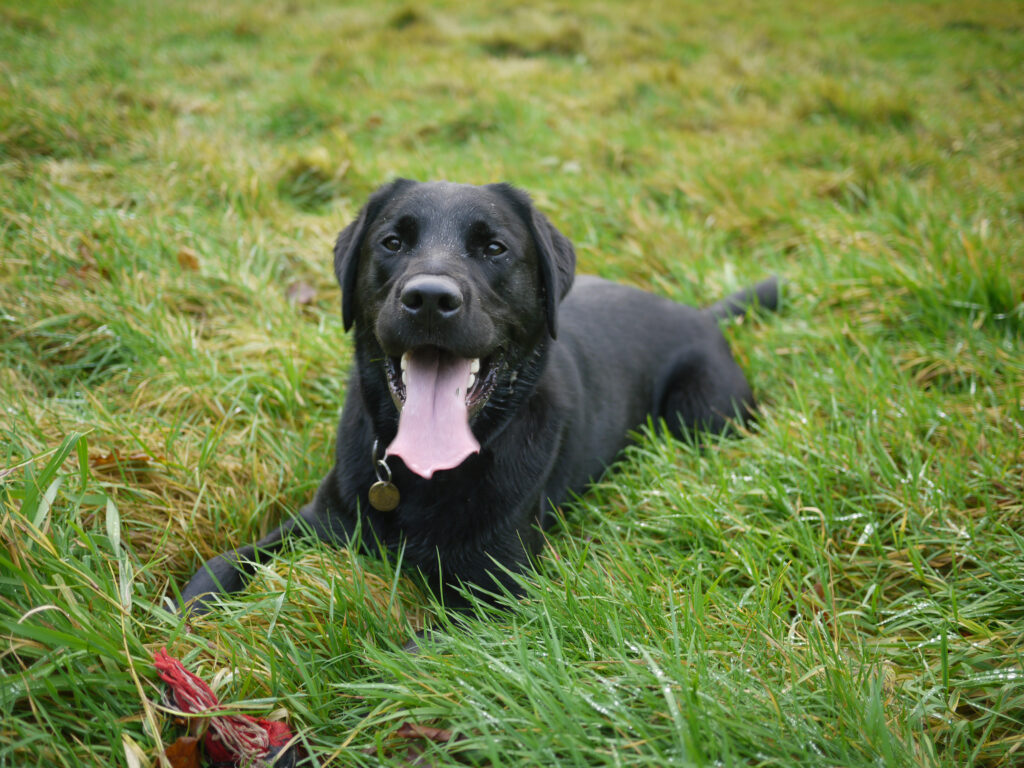
Start with one of these diets …
1. A raw diet can work very well for dogs with yeast issues. You can also choose a commercial semi-homemade dog food diet such as dehydrated food. We always recommend adding a little more fresh meat protein as well to ANY dehydrated diet. ROTATION IS VITAL.
Don’t stick to one protein source though. Rotate between different meat sources. We rarely recommend using any dog foods with chicken as the protein source unless it is completely organic. Organic and grass-fed is even better. You can rotate between breakfast and dinner or by changing the protein source every other day.
2. Cooking a healthy home-cooked meal is in our opinion the best option for your yeasty dog and the protein should NEVER be over cooked. Keep that meat as pink as possible while lightly cooking on the outside. Our cookbook can be a helpful start. Read the reviews here.
3. There are plenty of companies out there that create homemade meal kits and all you need to do is put it together and warm it up.
3. External Care for a Dog Yeast Infection
Topical Skin & Body:
While it’s critical to support your dog’s internal organs when trying to eliminate a yeast problem, it’s equally as important to care for your dog’s largest organ, the skin.
We hear from many of our readers that they’ve tried a vinegar rinse, povidone-iodine, and other products, but none have worked. While these may help with minor skin conditions and eliminate surface bacteria, they typically will not work for yeast. You need a formula that is strong enough to eliminate difficult microorganisms, yet will not cause additional inflammation of the already tender skin.
Our yeast repair kit can provide topical relief from the dog’s skin issues and help to heal by eliminating 99.9% of bacteria, fungus and topical viruses including
Yeast, fungus, allergies, dermatitis, open sores on the skin, hot spots, black/red skin, itchy feet, chewing, body scabs, patches of hair loss, dry skin, staph, bumps, infection.
The kit can be an exceptional tool for dogs trying to recover from any skin issues including yeast. However, the kit alone may not cure your dog’s problem and this is why it’s important to follow a good protocol for your dog’s internal and external systems as we share here on this page.
Yeasty Ears:
Dogs with allergies will often have chronic ear infections as well. One particular product we recommend for treating ear infections is called Eco Ears and can be found here on Amazon. It has great reviews and we keep it on hand. Although it’s natural, it is still only recommended for infections and not for cleaning the ears, etc. It’s good to keep on hand and works well. Use witch hazel to clean your dog’s ears. This can be found at any local pharmacy. Using the above recommended Daily Multi has also made a difference for some of our customers.
4. Things to Avoid that Can Make Your Dog’s Bacterial Skin Infection Worse
Here’s a list of things that can upset that delicate balance and destroy your dog’s immune system, leaving your best friend wide open to disease, illness and the inability to heal naturally.
When you combine the following with a poor diet; you can understand why your dog’s immune structure is in distress. Pay close attention to the first three which have very negative effects on your dog:
- Antibiotics (on/off – chronic use such as with chronic ear infections)
- Chemical Flea and Tick Medicines are VERY HARMFUL. Use natural.
- Vaccines are also VERY HARMFUL
- Yard Pesticides
- Steroids
- Hormones
- Over the Counter Medications
- Stress and Anxiety
- Lack of Exercise (this is a big factor in stress for dogs)
Conclusion
If you follow the above recommendations, we have no doubt that your dog will recover. Develop a game plan and stick with it. Keep a diary of how your dog does use the new protocol. Pay attention to small changes and note them. It can take several months or longer to heal a nasty yeast infection. Just remember to not compromise his immune system any further (vaccines, chemical flea and tick products, etc).
Be patient and most of all, be consistent!
Editor’s Note: The blog post was originally published in November 2011 and completely revamped and updated for accuracy on January 2021.

